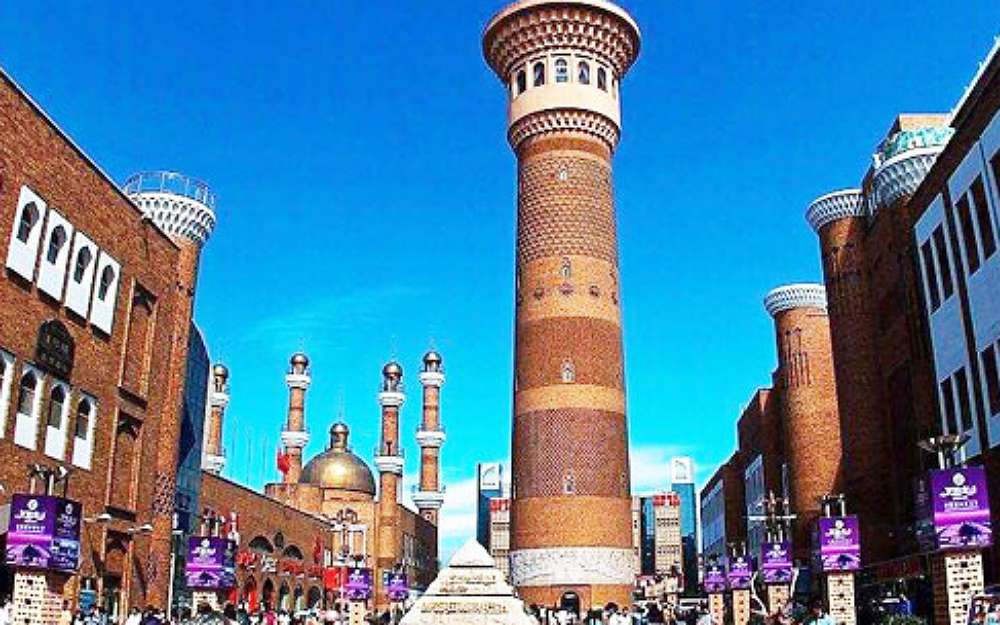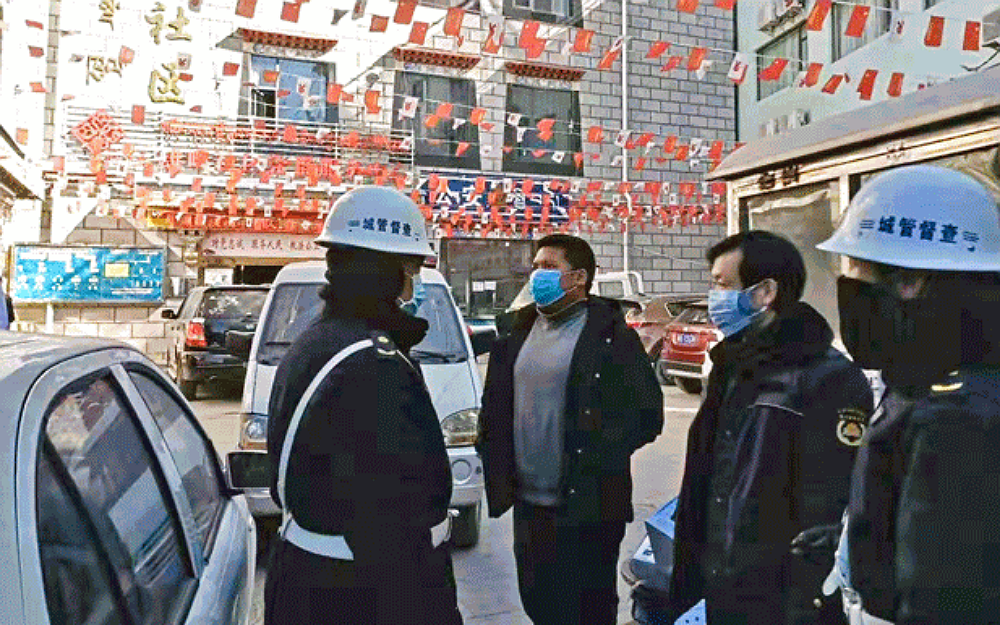Authorities in several cities have put in place quarantines as a preventive measure.
By Shohret Hoshur for RFA Uyghur and by RFA Tibetan

Authorities in Xinjiang are implementing new lockdowns in response to a coronavirus outbreak thought to have originated with Chinese tourists who visited the western region’s Ili Kazakh Autonomous Prefecture, local officials said.
After Chinese media reported that the number of COVID-19 infections in the Xinjiang Uyghur Autonomous Region had begun to rise, authorities in Ghulja (in Chinese, Yining) and other urban areas ordered residents to quarantine, the sources said.
The number of infected people in Xinjiang rose to 274 from July 31 to the end of the first week of August, according to an Aug. 7 report on Tengritagh (Tianshan), the official website of the Xinjiang government. The new variant of the virus was first detected in the Ili Kazakh (Yili Hasake) Autonomous Prefecture, where Ghulja is located, and spread widely from there.
Because of the COVID-19 outbreak, authorities have divided Xinjiang into 45 high-risk areas, 34 medium-risk areas and nine low-risk areas, and implemented quarantine measures at different levels, the report said. Those areas include the cities of Urumqi (in Chinese, Wulumuqi), Ghulja (Yining), Aksu (Akesu), Kumul (Hami), Chochek (Tacheng), Bortala (Bole), and Kashgar (Kashi).
Chinese government officials told reporters at a press conference in Urumqi on Aug. 8 that there were 34 infected people in Ili Kazakh Autonomous Prefecture, which is in the northern part of Xinjiang, but they did not say how and where they caught the highly contagious respiratory virus.
A community official said that the new infections were thought to have been brought by Chinese tourists from Gansu province, and the first viral outbreak in Ghulja was found in Uchon Dungan village.
A Chinese government official in Samyuzi village told RFA that quarantine measures have been implemented in his village, and that residents are prohibited from going outside.
A security official in Ghulja’s Mazar village said the epidemic in Ghulja was first detected in Mai village, also known as the Uchon Dungan village, and that the virus was spread by Chinese tourists from Gansu province.
The official, who declined to give his name for safety reasons, also said that he and others now were busy with quarantine-related work and that there were five infected residents in the village, who ate in one of the same restaurants where the Chinese tourists ate.
“They are being treated now,” he said. “They got infected while they were eating with some Chinese tourists from China proper. They got the virus from those tourists. The ones who got infected were [ethnic] Hui and Dungan [Chinese Muslims].”
“The government checked all the people who went to eat in that restaurant and also where those Chinese tourists went while they were traveling here,” he said. “We heard that the Chinese tourists came from Gansu province.”
The village security officer also said there were two infected people in Borichi hamlet of Yengitam village, who ate in the same restaurant where the Chinese tourists dined.
He told RFA that he learned about the local COVID-19 infections from other community officials on the Chinese instant-messaging platform WeChat, but that he did not know where or how the infected people were being handled because information was not passed on to lower-level officials like him.
“They also went to the same restaurant with those Chinese tourists,” he said.
Two of the infected residents of Uchon Dungan village had been renovating their houses and bought some construction materials in Chinese provinces, he added.
Uchon Dungan village residents have not been allowed outside for several days and are performing COVID-19 tests at home, the village security official said.
When COVID-19 first sprang up in Wuhan, China, in late 2019, Uyghur and Kazakh residents in Xinjiang were increasingly being confined to “re-education” camps. They have since been subjected to lockdowns during local coronavirus outbreaks.
At that time, residents said that authorities were testing unknown drugs on them, according to an earlier RFA report.
Ghulja city was also locked down due to a rising number of COVID-19 cases in late 2021. Desperate residents short of food were forced to complain to authorities despite official warnings to keep quiet, sources told RFA at the time.
In late January, Chinese government health officials issued a statement about new COVID-19 infections in Qorghas (Huocheng) county, located between Ghulja and the border to Kazakhstan, in Ili Kazakh Autonomous Prefecture, and said a lockdown had been implemented as a measure to curb the spread of virus.

COVID cases in Tibet
Meanwhile, neighboring Tibet Autonomous Region (TAR) reported four COVID-19 infections on Aug. 7, the first sign of the virus in the region since a single case was found at the start of the pandemic in January 2020.
Asymptomatic infections were detected in four travelers between the ages of 47 and 61 from Ngari prefecture, according to local Chinese health authorities.
Also on Aug. 7, 18 people tested positive for the coronavirus in Tibet’s capital Lhasa — the youngest being 3 years old and the oldest 76 — though only two people in the group were symptomatic, the TAR government’s report said. They all had traveled from Shigatse to Lhasa by train earlier this month.
The members of the group and people who had contact with them are in quarantine for observation.
“COVID has spread to Lhasa now, and there are 18 [people] who have tested positive for it,” said a Tibetan source who declined to be identified. “There has been a lot of commotion in the city since yesterday as the number of COVID cases rises. Stores are crowded with panicked shoppers trying to buy essential goods and facemasks.”
The source said he believed the actual number of infections in the area to be higher than what Chinese health officials reported.
“[T]he number is likely to rise in the coming days,” he said.
After the cases emerged, officials in Shigatse, Tibet’s second-largest city with a population of about 800,000 people, imposed three days of restrictions, during which people were banned from entering or leaving the city and various public venues, group events were canceled, and a traditional sports event scheduled to take place on Aug. 8 was postponed.
Areas are being locked down, and mass testing is under way in Lhasa and other cities, and authorities have sent notices to some offices and parents of schoolchildren not to travel.
The TAR People’s Hospital in Lhasa has stopped seeing out-patients because of the rising number of COVID-19 cases, the report said.
Religious activities and related gatherings and pilgrimages to Tibetan Buddhist sites have been suspended, according to an advisory issued by the Lhasa Buddhist Association on Aug. 8.
Additionally, Lhasa residents were directed to minimize their circumambulations around the Bharkor and Potala Palace to avoid huge crowds.
“The Chinese government has started imposing COVID-related restrictions in Lhasa and prompting people to get COVID tests,” said a Tibetan who declined to be named so as to speak freely.
Tourists and visitors to pilgrimage sites also were being restricted, the source added.
Translated by RFA Uyghur and by Tenzin Dickyi for RFA Tibetan. Written in English by Roseanne Gerin.
Copyright © 1998-2020, RFA. Used with the permission of Radio Free Asia, 2025 M St. NW, Suite 300, Washington DC 20036. https://www.rfa.org














